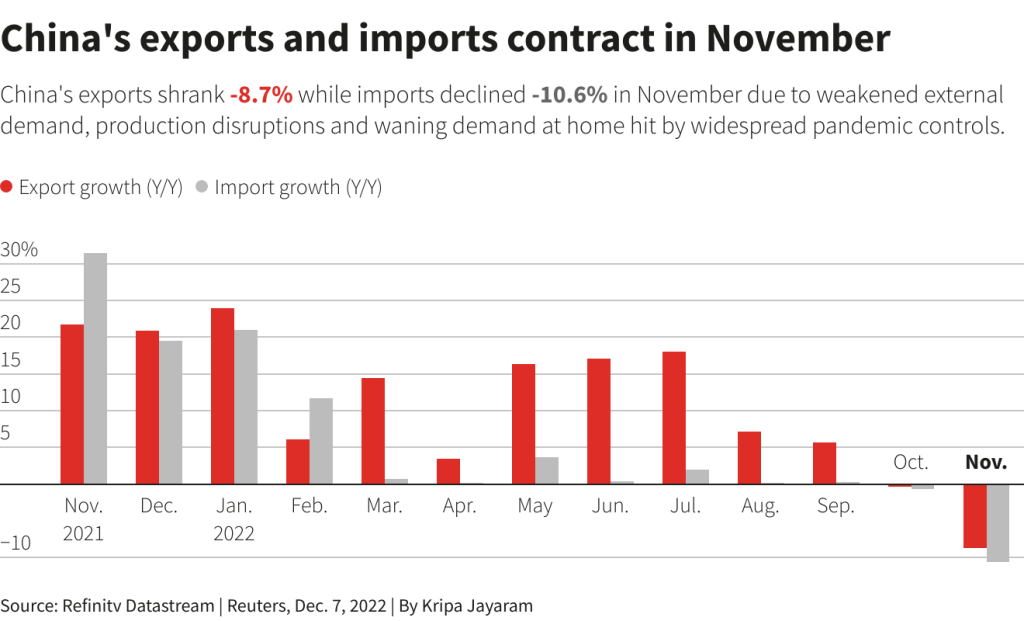- Big US banks expect a poorer economy in 2023, warning of a looming recession.
- The S&P 500 collapsed for a fourth straight session on Tuesday after a two-month rally.
- China posted dismal trade figures for November, with imports and exports experiencing their largest monthly declines since 2020.
Equities fell on Wednesday as investors became risk-averse. Investors’ joy over China’s significant change to its strict zero-COVID policy was muted as reality set in and dashed hopes for a smooth economic landing in the United States.
Big US banks expect a poorer economy in 2023 as rising rates and inflation threaten consumer demand. Top individuals at Goldman Sachs, Bank of America, and J.P. Morgan were pessimistic in their Tuesday remarks.
The S&P 500 went down for a fourth straight session on Tuesday due to the warnings, stopping a surge that lasted almost two months. Shane Oliver, investment strategy head at Australia’s AMP, stated that some of the optimism propelling the rally is being tested.
“We may move from a situation where we are concerned about interest rates and inflation to one where the problems are weakening growth and declining earnings.”
On Wednesday, China’s national health ministry announced that COVID-19 patients who are asymptomatic or have minor symptoms can self-treat while under home quarantine.
The announcement was the clearest indication that China is getting its people ready to live with the virus after nearly three years of crippling regulations devastated the economy. Some of the changes announced were similar to easing measures made by other nations many months ago.
However, the market’s response was muted as attention turned to China’s ability to effectively implement its policy change, particularly if new COVID cases increased throughout the winter. According to analysts, the road to a full economic recovery will be difficult, risky, and lengthy.

China posted dismal trade figures for November earlier in the day, with imports and exports experiencing their largest monthly declines since 2020 – dampening hopes for recovery and adding to the dimming global demand outlook.
India’s central bank increased its interest rates by 35 basis points to 6.25% on Wednesday, less than the three 50 bp rises it had previously delivered. This makes India the latest central bank to start reducing the size of rate hikes. The next big rate decision will come from Canada at 1500 GMT.


